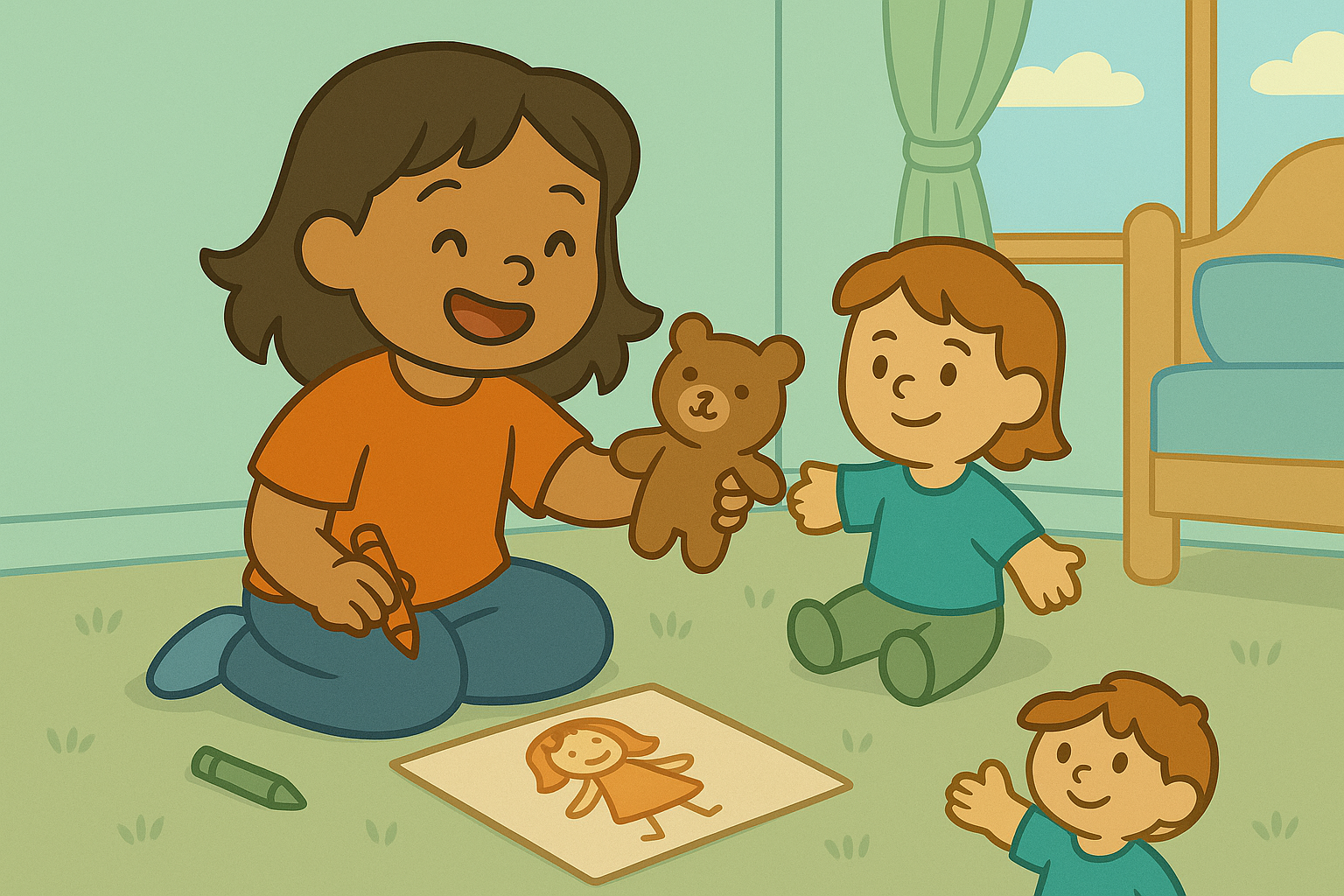Encouraging Self-Awareness Through Play
Encouraging Self-Awareness Through Play
Children learn who they are not through lectures or lessons, but through play. Every pretend story, tower built, and game negotiated with a friend offers clues about how they think, feel, and interact with the world.
By nurturing self-awareness through play, parents and educators give kids the foundation for emotional intelligence — helping them understand their strengths, manage challenges, and recognize the feelings behind their actions.
What Is Self-Awareness — and Why It Matters
Self-awareness is the ability to identify and understand one’s own emotions, thoughts, and behaviors. For young children, it means recognizing:
“I feel mad when someone takes my toy.”
“I’m proud I finished that puzzle.”
“I get shy when new people come.”
When children develop this awareness early, they grow into confident, empathetic communicators. It’s a cornerstone skill connected to later success in relationships, learning, and mental health — themes that echo those found in Helping Kids Recognize Emotions in Others.
Why Play Is the Ideal Tool for Building Self-Awareness
Play is children’s first language. It’s where they experiment with feelings, test boundaries, and express themselves safely.
In dramatic play, a child might pretend to be a doctor and comfort a “sick” doll — showing empathy. In block play, frustration over a falling tower reveals patience (or the need to practice it). Through games, they learn teamwork, fairness, and impulse control.
Because play feels safe and joyful, children naturally reveal what they think and feel — giving adults valuable insight into their inner world.
Creating a Safe Space for Emotional Discovery
To help kids build self-awareness, the environment must feel accepting and judgment-free.
You can create that safety by:
Validating feelings: “It’s okay to feel mad.”
Avoiding overcorrection during play.
Joining their play gently, without taking over.
Children need to know that their emotions — even big or messy ones — are welcome. That acceptance is what allows reflection and growth, similar to the foundation described in Building Emotional Safety in the Classroom.
Mirror Play: Seeing Themselves in Action
Young children learn a lot from simply watching themselves. Mirror play — making faces, mimicking expressions, or narrating actions — helps them connect physical sensations with emotions.
Try simple prompts:
“Can you make a happy face?”
“What do you look like when you’re tired?”
“Show me a brave face!”
This visual feedback connects body language to inner states. It also lays groundwork for emotional vocabulary and empathy — because kids who understand their feelings can better interpret others’.
Pretend Play That Reflects Real Emotions
Imaginative play gives kids a safe distance from real feelings while still exploring them.
For example:
Playing “school” can help them process classroom dynamics.
Acting out family scenes may express their understanding of home routines.
Puppet play lets shy children explore courage or kindness through characters.
Encouraging role-play (as discussed in Using Puppet Skits to Explore Feelings and Friendship) turns abstract emotions into manageable, relatable stories.
Art as a Mirror of Emotion
Drawing, painting, and sculpting allow kids to express feelings they can’t yet verbalize. Ask reflective questions without judgment:
“Tell me about your picture.”
“What’s happening here?”
“How were you feeling when you made this?”
The goal isn’t to interpret the art, but to invite conversation. Through creative expression, children discover emotional patterns — learning that how they feel influences what they create.
Movement Games That Connect Body and Emotion
Children experience emotions physically — a racing heart, tense muscles, or butterflies in the belly. Movement-based play helps them notice and name these sensations.
Try:
Emotion Freeze Dance: Call out emotions — “happy,” “angry,” “sleepy” — and have kids move to the music, then freeze in a matching pose.
Ball Toss Feelings: Toss a ball and say a feeling word; the catcher names a time they felt that way.
These playful activities promote emotional regulation and body awareness, like those explored in Teaching Kids to Recognize Body Signals of Emotions.
Cooperative Games That Build Insight and Empathy
Games with shared goals — building a fort, completing a scavenger hunt, or playing a team sport — reveal how children see themselves in groups. Do they lead or follow? Compromise or compete? Feel frustrated easily or stay calm?
Afterward, reflect together:
“What part was easy for you?”
“What made it hard?”
“How did you feel when we worked as a team?”
This post-play reflection turns action into awareness and strengthens the link between emotion, behavior, and outcome.
Storytelling for Reflection and Connection
Storytelling invites kids to reflect on experiences and emotions safely. You can prompt them with:
“Tell me about a time you felt proud.”
“What did you do when you felt left out?”
“What would you do differently next time?”
Bedtime is a perfect moment for these gentle conversations. Much like in Using Bedtime Conversations to Build Self-Awareness, stories help children organize feelings, understand consequences, and integrate lessons from the day.
Helping Kids Reflect Without Shame
When discussing emotions after play, avoid framing feelings as “good” or “bad.” Instead, use language that acknowledges and explores:
“You felt frustrated when it fell. What helped you calm down?”
This approach teaches that emotions are signals, not flaws. When kids learn that all feelings are welcome, they’re less likely to hide or deny them — and more likely to process them constructively.
Self-awareness doesn’t grow overnight — it blossoms over time, through play, reflection, and consistent modeling. When you let your child lead their play and guide their emotions with empathy, you give them a lifelong toolkit for emotional understanding.
Each block built, drawing made, and story shared becomes a mirror through which they see who they are — and who they’re becoming.
This content is for educational purposes and is not a substitute for professional medical or psychological advice.
Popular Parenting Articles


